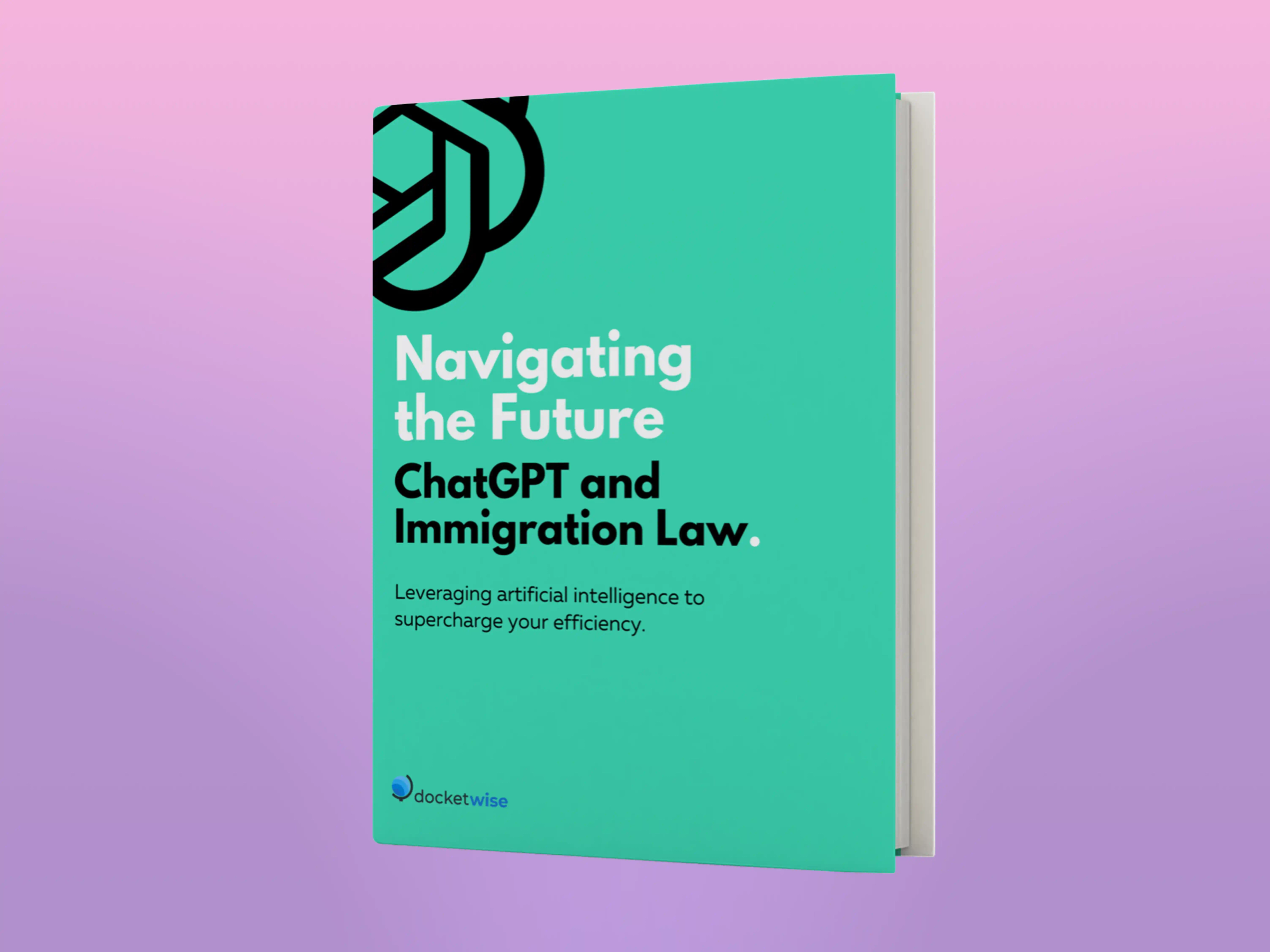Form I-130, Petition for Alien Relative, is a document used by U.S. citizens and lawful permanent residents to establish a qualifying relationship with an eligible relative who wishes to immigrate to the United States and request that an immigrant visa number be made available for that relative. This form is the first step in the family-based immigration process and, upon approval, it enables the relative to apply for an immigrant visa abroad or for adjustment of status in the U.S., if otherwise eligible.
Accurate and complete documentation further helps demonstrate the legitimacy of the familial relationship and the eligibility of the relative for immigration benefits.
Proper documentation guarantees the petition is processed smoothly and avoids delays of rejections due to incomplete or incorrect information.
In this blog post, we will go over the checklist to assist lawyers in gathering all necessary documents for the Form I-130 petition on behalf of their clients. We will outline methods to streamline the application process, ensuring that you as a lawyer provide all required evidence to support your clients' petitions effectively and help achieve your client's goals.
So without any further ado, let’s start with the documents required for I-130 form filing.
I-130 Documents Checklist for Spouses
Form I-130 (Petition for Alien Relative)
As a legal professional, you have to make sure that Form I-130 is accurately prepared and submitted with all necessary documents to establish the qualifying relationship between the petitioner and the beneficiary. To do that, simply gather proof of your client's status and marriage documents, complete Form I-130 (and I-130A for a spouse), and include evidence of a bona fide relationship along with required photos.
Proof of U.S. Citizenship or Lawful Permanent Residence
Include a copy of a U.S. birth certificate, passport, or naturalization certificate to prove the petitioner’s status. For lawful permanent residents, include a clear and legible copy of both sides of the Green Card (Form I-551) or other proof of permanent residence.
Proof of Relationship
As mentioned above, you will also have to provide proof of relationship. Submit the marriage certificate as the legal document proving the marriage between the petitioner and the beneficiary.
Additionally, to demonstrate the marriage is bona-fide, which means it was entered into in good faith, with the intention of building a future together as spouses, and not only for immigration purposes, include documents such as joint bank account statements, lease or mortgage agreements, utility bills in both names, health and life insurance policies, photographs of the couple together over time, and birth certificates of children born into the marriage.
Previous Marriages
If the petitioner or beneficiary was previously married, provide divorce decrees or death certificates to prove that those marriages have been terminated.. This is essential for establishing that a legally valid marriage exists between the parties.
Passport-Style Photos
Besides the documents for the I-130 we have discussed above, you will also have to submit two recent passport-style color photos of both the petitioner and the beneficiary. These photos must adhere to the following specifications outlined by USCIS to avoid any delays or rejections:
Size: 2 x 2 inches (51 x 51 mm).
Head Position: The head must be centered with a full face, frontal view. The head height should measure between 1 inch and 1 3/8 inches (25 to 35 mm) from the bottom of the chin to the top of the head.
Background: White to off-white background.
Paper Quality: Printed on thin, glossy, or matte photo-quality paper.
Timeframe: Taken within 30 days of filing the petition.
Other Requirements:some text
No eyeglasses (unless for medical reasons with a doctor's note).
No head coverings, unless for religious purposes (the face must be fully visible).
A neutral facial expression or a natural smile with eyes open.
Filing Fee
The current filing fee for Form I-130 is $625 for online submissions and $675 for paper filings. Payments can be made via check or money order payable to the U.S. Department of Homeland Security, or by credit card using Form G-1450. Always verify the latest fee amount on the USCIS website to ensure correct payment.
Those are all the I-130 required documents for a spouse. Let’s now take a look at the supplemental ones.
Additional Documents for Spouse (I-130 Supporting Documents)
When filing Form I-130, Petition for Alien Relative, it is important to help your client include comprehensive supporting documents to facilitate timely processing. A critical component of these documents is proof of any legal name changes by the petitioner or the beneficiary.
Proof of Legal Name Change
Submit official documents validating any legal name changes due to marriage, divorce, or other legal reasons:
Marriage Certificates: Provide a certified copy of the marriage certificate if the name change was due to marriage.
Court Orders: Include a certified copy of any court order that legally changed the name.
Divorce Decrees: If reverting to a maiden name post-divorce, submit the divorce decree stating the change.
Adoption Decrees: For name changes following adoption, attach a certified copy of the adoption decree.
Translations
Any documents not in English must be accompanied by certified English translations. The translations must be accurate and include a certification from the translator affirming their competence in both languages and the completeness and accuracy of the translation.
I-130 Required Documents for Children (I-130 for Parents Checklist)
I-130 Required Documents for Children (I-130 for Parents Checklist)
**Form I-130 (Petition for Alien Relative): **Work closely with the parent to ensure Form I-130 is filled out accurately and signed for each child. This establishes the qualifying relationship between the petitioner and the child.
**Proof of U.S. Citizenship or Lawful Permanent Residence: **Include a U.S. birth certificate, passport, or naturalization certificate to prove the petitioner's status. For lawful permanent residents, provide a copy of both sides of the green card (Form I-551) or other proof of permanent residence.
**Proof of Parent-Child Relationship:**some text
If filing for a child and you are the mother: Submit a copy of the child’s birth certificate showing your name and the name of your child.
If filing for a child and you are the father: Submit a copy of the child’s birth certificate showing both parents’ names, your marriage certificate to the child’s mother, and proof of legal termination of any prior marriages, issued by civil authorities.
If filing for a child born out of wedlock and you are the father: Submit evidence that you and the mother were married while the child was under 18 years of age, or submit evidence that the child was legitimated under the law of the child’s residence or domicile, or under the law of your residence or domicile, before the child reached 18 years of age. If your child was not legitimated before reaching 18 years of age, you must file your petition with copies of evidence that a bona fide parent-child relationship existed between you and the child before the child reached 21 years of age. This may include evidence that you lived with the child, supported him or her, or otherwise showed continuing parental interest in the child’s welfare.
**I-130 Form Supporting Documents for Children:**some text
Adoption Documents: If the child is adopted, include a copy of the final adoption decree. This legal document finalizes the adoption and is crucial for establishing the parent-child relationship.
Proof of Legal Name Change: If applicable, provide court orders or other legal documentation showing any legal name changes for the child.
Translations: Any documents not in English must be accompanied by certified English translations. These translations must be accurate and include a certification from the translator affirming their competence in both languages and the completeness and accuracy of the translation.
Filing Process and Tips
Organizing Your Petition
Include a cover letter summarizing the petition and explaining unique circumstances. This prevents overlooked items and speeds up the review.
Advise clients to organize documents according to the checklist for the I-130 documents checklist for spouses and the I-130 checklist for children. Use tabs or dividers for each section, making it easier for the officer to review.
Double-Check Requirements
Before submitting, ensure all required documents are included by verifying each item against the USCIS I-130 document checklist. This avoids delays from missing information and prevents Requests for Evidence (RFEs).
Submission Guidelines
Follow specific USCIS mailing instructions based on location and concurrent filing with Form I-485. Verify the latest instructions on the USCIS website. Include the correct filing fee and accepted payment method. For instance:
Mail to the Phoenix lockbox if you live in Alaska, American Samoa, Arizona, California, Colorado, and other specified states.
Mail to the Elgin lockbox if you live in other states or territories.
Follow-Up
Track the status of the petition through the USCIS website. Upon submission, you will receive a receipt notice (Form I-797C) with a receipt number. Use this number to check your case status online or sign up for email or text updates. Monitoring the petition's status ensures timely responses to any USCIS requests or updates.
Using Immigration Forms Tracking to Streamline Processes
To enhance efficiency in your immigration practice, consider using good form-tracking software or an all-in-one solution. Here’s how the right software can help you.
Simplified Information Gathering: By merging multiple forms into a single comprehensive questionnaire, these platforms minimize redundant data entry and streamline interactions, easing the process for both clients and attorneys.
Multilingual Support: Supporting various languages enhances accessibility for clients who may not be proficient in English. This ensures accurate and thorough form completion, mitigating errors related to language barriers.
Team Collaboration: These systems facilitate seamless collaboration among team members, providing real-time access and updates to documents along with effective case management. This boosts coordination and operational efficiency across your team.
Automatic Form Updates: With automatic updates to the latest versions of forms, these software solutions maintain compliance with current USCIS regulations, thereby reducing the risk of errors and eliminating the need for manual updates.
Enhanced Client Communication: A user-friendly interface simplifies the information submission process for clients, cutting down on typical communication delays. It also provides real-time updates and notifications to keep both clients and attorneys promptly informed about any changes or new developments.
Secure Document Storage: Ensuring that all data and documents are securely stored and accessible only to authorized team members safeguards sensitive information, providing peace of mind.
Customizable Templates: Offering templates that can be tailored to meet the specific needs of your practice facilitates efficient handling of unique cases.
Integration with Existing Systems: These platforms can seamlessly integrate with the tools and systems you currently use, creating a streamlined workflow for your practice.
One such comprehensive solution is Docketwise.
Docketwise's comprehensive suite of features is specifically designed to address the unique challenges faced by immigration law practitioners, making it an indispensible tool for modern legal practices.
Wrap Up/ Your Pathway to Efficient I-130 Processing
Now that we have gone over the required documents for I-130 filing as well as the supporting documents for form I-130, you can ensure that your clients achieve the goals they have.
To wrap things up, following the I-130 checklist for spouses and the guidance we’ve provided should make preparing Form I-130 petitions a lot smoother, helping you avoid common pitfalls and speed up the process for your clients. With every document perfectly in place, you’re setting yourself up for success and making sure your clients have the best shot at a favorable outcome.
Using Docketwise can take your efficiency to the next level. It streamlines the entire immigration paperwork process, makes team collaboration easy, and keeps you updated every step of the way. It also helps with filling a variety of forms including the I-130 supporting documents and H1-B forms.
To really get a feel for how Docketwise can make a difference in your practice, why not see it in action?
Book a demo today and discover how simple and stress-free immigration law can be with the right tools. Docketwise is more than just software; it's a game-changer for your practice. Schedule your demo here and start transforming the way you handle immigration cases.
Transform Your Practice with ChatGPT
Discover how AI, particularly ChatGPT, can revolutionize your practice, from automating tasks to mastering effective prompting.
Download Now
About the author

Michael MielloContent Writer
